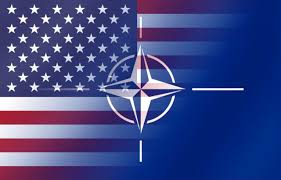

Tuesday, Nov. 27, the Middle East military spotlight swung around from Gaza to the Syrian war with steps for the start of US and NATO intervention in that conflict. Without spelling this out, a game changer began unfolding when a joint Turkish-NATO team began making a site survey for the deployment of Patriot Air and Missile Defense Systems, manned by American military teams. The team, said the statement from Ankara, will assess where to station the missiles and how many would be needed. It reiterated that the system is “for defensive purposes” and not for a “no-fly zone or offensive operations,” but just for use “against an air or missile threat from Syria.”
However, the Patriots in combination with already installed elements of the missile shield, will command an area beyond the Turkish-Syrian border - all of northern Syria up to and including the embattled towns of Aleppo and Homs, DEBKAfile’s military sources report.
Their presence will impede the operations of Assad’s most effective and lethal means of war against the rebels in that region – air force bombardment.
The positioning of US anti-missile missiles in Turkey coincides with the rebels’ success in destroying the Assad regime’s key air and radar stations in southern Syria and along the Jordanian border.
The two thrusts add up to a coordinated military effort in northern and southern Syria to seize control of the skies in both regions from Assad’s control and push his forces back into central Syria.
A part of the US-Turkish plan affects Israel. Monday, DEBKAfile reported exclusively that in a resounding blow to Bashar Assad's ability to fight external enemies, Syrian rebels had destroyed the Assad regime’s most important electronic warning radar station facing Israel – M-1 – Monday, Nov. 26.
This Russian-built station monitored Israeli warplanes' takeoff and landing activities at air bases in the Negev and Hatzerim in the south and tracked them up to the Syrian border. The facility was designed to guide Syrian missiles targeting any point on the Israeli map, in sync with air defense facilities south of Damascus and on the Golan Heights. The radar’s range also covered naval movements in Mediterranean waters off the shores of Israel and Lebanon.
Western military sources told DEBKAfile that the destruction of this vital facility has blinded the two eyes which Syrian air, air defense and missile forces had trained on Israel. It has therefore crippled, though not completely dismantled, Bashar Assad’s ability to got to war against Israel, Jordan or Saudi Arabia.
M-1 radar also swept all parts of Jordan and northern Saudi Arabia where the important Tabuk air base is situated. Deployed there in addition to the Saudi Air Force are French fighter-bombers ready to go to war against Syria.
M-1 also relayed current data on Israeli military movements to Hizballah and would have been a vital source of intelligence in a potential Lebanese Shiites offensive against the Jewish state.
The Syrian ruler and his spokesmen have frequently threatened since the eruption of the popular insurrection that if Assad had his back to the wall, the entire Middle East would go up in flames, especially Israel.
In the last two days, the Syrian rebels have made additional gains: They were able to capture areas abutting on the Jordanian border, excepting only the Ramtha border crossing. They also seized the Marj al-Sultan military air field southeast of Damascus and adjoining Syrian Army 4th Brigade bases.
Most of the men of the 82nd Infantry Brigade guarding M-1 were killed in the fighting, fled or were taken prisoner.
Our military sources notes that after M-1, the Assad regime still retains two key radar stations: M-2 in Shanshar south of Homs, which covers central and northern Syria; and M-3 near Latakia which keeps an eye on the northern region up to the Turkish border and the eastern Mediterranean up to Cyprus.
All three radar stations were linked to the Syrian general staff, air force, air defense, missile and navy operations rooms and fed them the essential real-time intelligence data needed for decision-making at the highest level. However, the loss of M-1 seriously hampers the Syria army’s capacity to take on Israel or Jordan.
DEBKAfile







 Associated PressIn this undated photo released by China’s Xinhua News Agency, made available on Sunday, Nov. 25, 2012, a carrier-borne J-15 fighter jet lands the Liaoning.
Associated PressIn this undated photo released by China’s Xinhua News Agency, made available on Sunday, Nov. 25, 2012, a carrier-borne J-15 fighter jet lands the Liaoning.




